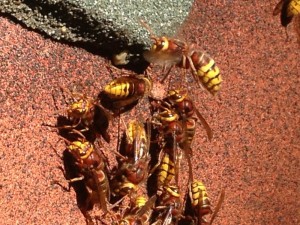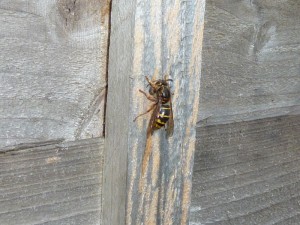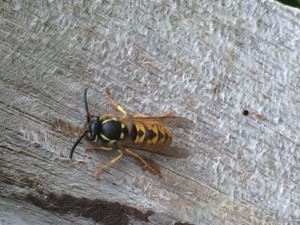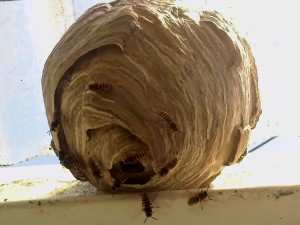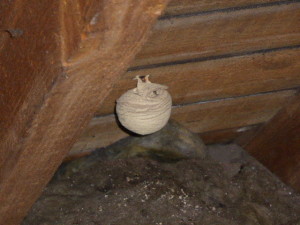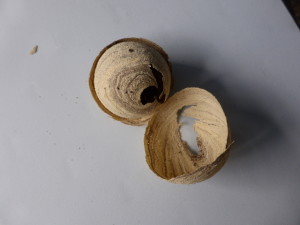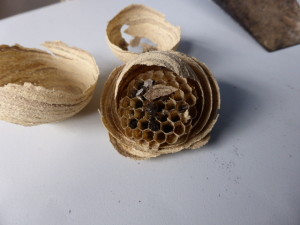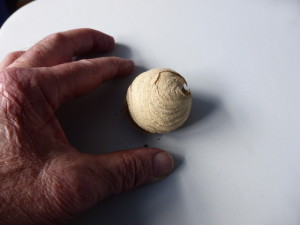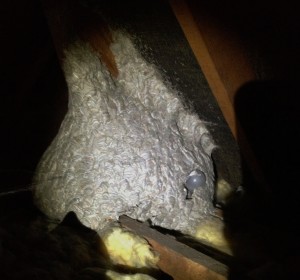Things about wasps - the wasp season:
This page is set out to explain more about Wasps and Hornets which are our most feared predatory insects and attribute to several deaths every year. But before we decide how to deal with them let's have a quick review of the species and find out more about the wasp season and what can make it so very dangerous for many people. Firstly, we have four main species of problem wasps within the U.K, these are as follows:
Common wasp - vespula vulgaris
German wasp - vespula germanica
Median wasp - dolichovespula media
Common hornet - vespa crabo
Contact Us
The wasp season - Early spring:
Queen wasps begin to emerge from hibernation when outside temperatures exceed 10°C. This is a staggered process starting in mid to late April but could stretch well into May.
During this primary stage these solitary queens start searching for a suitable nesting site which could be a roof space, cavity wall, sheltered bush or anywhere offering protection from the elements.
Large wasps entering bedrooms in early spring:
It is during this early period of the season these large wasps are often seen hovering around roof soffit's and guttering as they pick up the attractive pheromones given off by quantities of sawn timber and those of previous wasp nests. The sight of a large wasp finding it's way through open windows or light fittings is also a cause for concern by many home owners in early spring.
Many queen wasps often die in early spring:
This initial phase of the wasp season is however extremely perilous for these solitary queens, many will die if weather conditions turn cold and wet whilst others will simply starve to death due to very limited food availability.
Wasp nest construction:
Those which survive will gather wood rasped from trees, garden furniture or fencing panels which is pulped by their mouth parts and moulded into place to form a golf ball sized nursery nest structure containing 18 - 25 perfectly formed cells. As each cell is completed she will deposit a single egg inside and nurture this until it hatches to produce a tiny larvae or grub.
The queen continues to feed the brood with small insects, caterpillars and grubs which are high in protein and nutrients, in return the larvae secrete a sweet fluid concentrate which provides essential food supplements to the hard working queen and subsequent adult wasps.
This seemingly insignificant exchange of secretions is known as trophallaxis meaning all parties benefit.This action creates a strong bond to the nesting colony for all adult wasps and the larvae .
Some six weeks after the initial egg laying the first adult worker wasps will emerge from pupation. All workers are sterile females and it will be their task to take up feeding duties of larvae and the queen. Expanding the structure of the nest, cell production and temperature regulation will also be the responsibility of all subsequent workers. After these first adult workers arrive the queen remains in the nest and becomes little more than a figure of egg production.
Mid summer - Rapid wasp nest growth
As the number of worker wasps increases the nest starts to expand rapidly. Traffic to and from the nest is constant from dawn til dusk as workers bring in vast amounts of food for the growing larvae and pulped wood for cell and nest construction. It is estimated the average wasp nest will consume 1.5 to 2.0 kg of small insects and grubs during a season's activity!
Activity continues to increase until it reaches a peak by about mid August. By this time, in ideal conditions the nest could reach 65cm (2.5ft) or more across and could contain up to 60,000 wasps!
The nest opposite is one such historical nest I found a while back. The standard sized light bulb in the far lower R/H corner gives a good size comparison.
Many of the queens however will have finished egg laying and died by mid to late August. This is when the wasp season takes a turn for the worst and hostility with humans sets in! Contact Us
About wasp nest decline
The final brood created by the queen will produce fertile males known as drones and young queens. The drones will mate with the queens and die shortly afterwards. The newly fertilized juvenile queens are tended by the workers until they have sustained sufficient reserves to leave the nest (late September to October) and seek a suitable place for hibernation until spring the following year.
Why do wasps become such a problem in late summer?
This declining stage of the wasp season brings wasps into conflict with humans and here's why:
Earlier I mentioned wasps feeding on the sweet nutritious secretions from the larvae each time they are fed. During the growth season the adult wasps become addicted to these secretions. But, after the queen has died larvae numbers decline so workers have to find alternative sources to substitute this apparent "fix". These deprived wasps will by now start to pester those of us wishing to eat outside as we all take advantage of warm sunny days during late summer. I am sure many of us can recall fending off scavenging wasps as we sit in a pub garden during the latter part of August & September?
Wasp stings
The venom from a wasp sting is a highly concentrated cocktail of toxins derived from the poisonous elements of insects they feed on. The minute quantity (approx. 5 -12 micrograms) of venom injected by the sting contains many enzymes like hyaluronidase which causes skin cells to break down allowing the toxin to spread thus expanding the area of the sting. Neurotransmitters like acetylcholine and serotonin stimulate nerves at the site causing them to fire erratically causing pain and itchiness. The body's natural reaction is to produce large quantities of histamine to dilute the toxins causing the area to swell; blood vessels also become stimulated causing redness.
Warning - Severe reactions to wasp stings:
Some individuals may show extreme reactions to wasp stings and in some cases go into a condition known as "anaphylactic shock". This is a life threatening concern where blood pressure suddenly drops and airways to the lungs narrow causing breathing restrictions. If you or someone you are with starts to feel unwell shortly after being stung ensure they seek medical help immediately by dialing 999.
Wasp attacks!
To make matters worse wasp venom also contains an aggressive pheromone (scent) which marks the stung individual triggering other wasps in the vicinity to "attack". If you are unfortunate enough to be stung them move away from the area immediately and preferably go inside.
Treating wasp stings:
Wasp stings can be very serious for some individuals so it is important to obtain appropriate advice. If its not life threatning then go to NHS Direct.
Whilst I am not medically qualified to advise on the treatment of wasp stings here are a few tips which may help if you are unfortunate enough to be stung:
Always carry a proprietory spray or cream and antihistamines for the treatment of wasp stings during the warmer months of the year when wasp activity and the threat of stings might be apparent.
If stung move away from the area immediately to avoid being attacked (see above) and get inside a building without delay.
If you feel unwell after a wasp sting call 999 immediately.
Medications containing antihistamine can assist in reducing the effects of the sting. A cold compress over the site might also help lessen some of the side effects. Additional over the counter remedies on the advice of a pharmacist might also assist in minimizing symptoms.
If in any doubt call 999 or seek professional medical advice immediately!.
